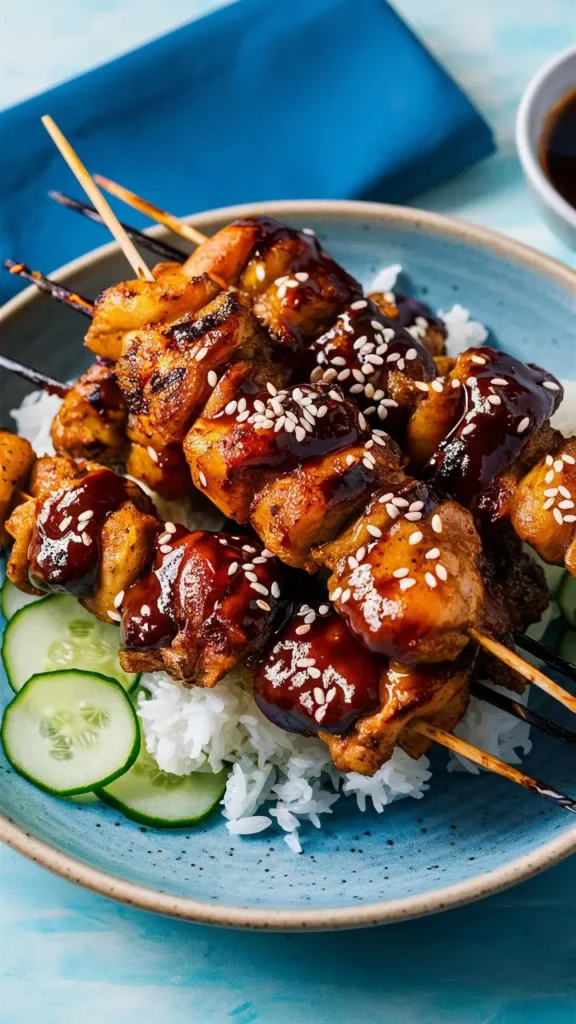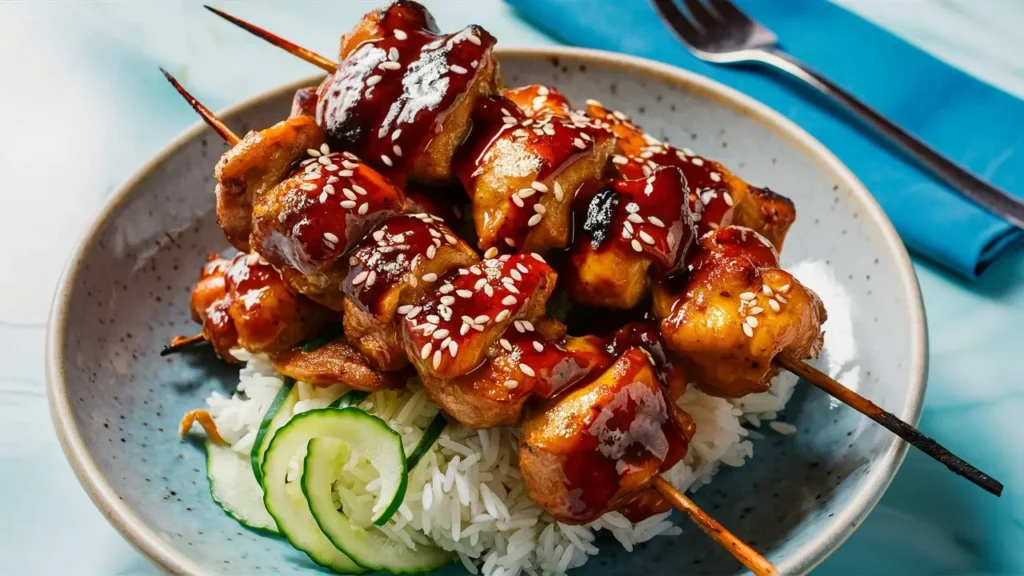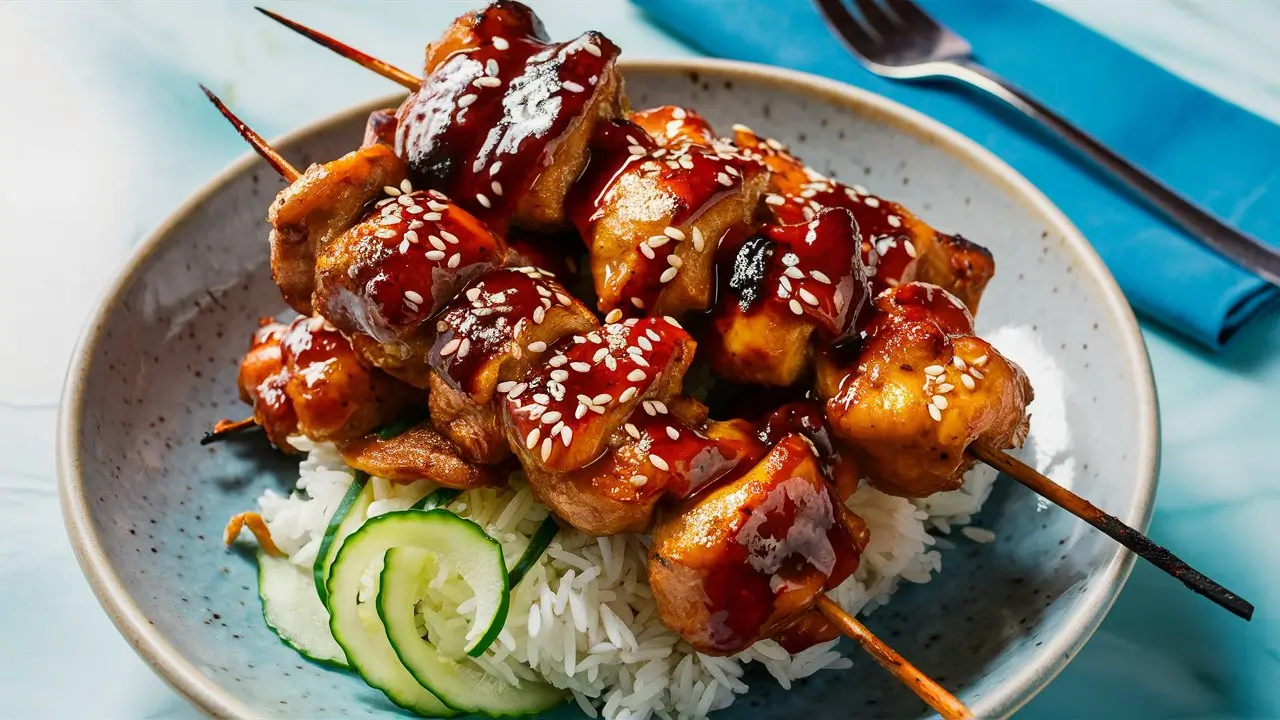Korean BBQ, or Gogigui (meat roast), is a popular dining style from Korea where diners grill marinated meats—most commonly beef, pork, or chicken—at the table, often accompanied by a colorful array of side dishes called banchan. It’s more than just a meal—it’s a social experience that brings people together around the grill.
Korean BBQ restaurants have become a global sensation, but you can also recreate this interactive and flavorful feast right at home. With a few key ingredients and techniques, you can enjoy authentic Korean flavors in your own kitchen or backyard.
Why You Will Love This Recipe
1. Deliciously Bold Flavors
The marinades used in Korean BBQ are packed with savory, sweet, and umami flavors that seep into every bite of meat.
2. Fun and Interactive
Korean BBQ is not just about eating—it’s about cooking together and sharing the experience.
3. Customizable Spread
From spicy pork to sweet bulgogi beef, you can easily tailor the proteins and sides to your liking.
4. Perfect for Gatherings
It’s an ideal meal for dinner parties or family celebrations, offering something for everyone.
Ingredients List
For Bulgogi (Beef BBQ)
-
1 pound thinly sliced ribeye or sirloin
-
¼ cup soy sauce
-
2 tablespoons brown sugar
-
1 tablespoon sesame oil
-
1 tablespoon rice vinegar
-
1 tablespoon grated Asian pear (or apple)
-
2 teaspoons minced garlic
-
1 teaspoon grated ginger
-
1 tablespoon chopped scallions
-
½ teaspoon black pepper
For Spicy Pork (Dwaeji Bulgogi)
-
1 pound pork shoulder or belly, thinly sliced
-
2 tablespoons gochujang (Korean chili paste)
-
1 tablespoon soy sauce
-
1 tablespoon sesame oil
-
1 tablespoon honey or sugar
-
2 teaspoons minced garlic
-
1 teaspoon grated ginger
-
1 tablespoon rice wine or mirin
Optional for Chicken or Tofu
-
Use the bulgogi or spicy marinade above, depending on preference.
Banchan (Side Dishes)
-
Kimchi
-
Pickled radish
-
Steamed rice
-
Ssamjang (dipping sauce)
-
Lettuce leaves
-
Cucumber salad
-
Japchae (glass noodles)
-
Bean sprouts
Timing & Servings
-
Prep Time: 30 minutes (plus marinating time)
-
Cook Time: 15–20 minutes
-
Total Time: 45–60 minutes
-
Servings: 4–6 people
Step-by-Step Instructions for Korean BBQ
Step 1: Marinate the Meat
Mix the marinade ingredients in a bowl, add the meat, and toss until fully coated. Marinate for at least 30 minutes, ideally 2–4 hours or overnight in the fridge.
Step 2: Prep the Grill or Pan
Use a stovetop grill pan, cast iron skillet, or tabletop electric grill. Preheat over medium-high heat.
Step 3: Cook the Meat
Grill marinated meat in batches until browned and cooked through. Thin slices cook quickly, around 2–3 minutes per side.
Step 4: Prepare the Side Dishes
While the meat cooks or marinates, prepare and arrange your banchan. Wash lettuce leaves, make rice, and set up sauces.
Step 5: Serve and Assemble
Place grilled meat in lettuce with rice, kimchi, and ssamjang. Roll it up like a taco and enjoy.

Essential Korean BBQ Sauces
Ssamjang (Lettuce Wrap Sauce)
-
1 tablespoon gochujang
-
1 tablespoon doenjang (fermented soybean paste)
-
1 teaspoon sesame oil
-
1 teaspoon honey
-
Chopped garlic and green onion to taste
Soy Dipping Sauce
-
2 tablespoons soy sauce
-
1 tablespoon rice vinegar
-
½ teaspoon sesame oil
-
Sliced scallions and sesame seeds
Meat Substitutions and Vegetarian Options
-
Beef: Use sirloin, ribeye, or flank steak.
-
Pork: Belly, shoulder, or even ground pork for patties.
-
Chicken: Boneless thighs work best.
-
Vegetarian: Try tofu, mushrooms, or tempeh in the same marinades.
Serving Suggestions
-
Lettuce Wraps: A must-have for authentic Korean BBQ. Use romaine, green leaf, or perilla leaves.
-
Sticky White Rice: A classic pairing to balance the bold flavors.
-
Grilled Veggies: Add mushrooms, onions, zucchini, or eggplant to the grill.
-
Banchan Variety: The more, the merrier. Small portions of 5–7 different sides are typical.
How to Set Up Korean BBQ at Home
Equipment You Can Use
-
Stovetop grill pan or cast iron skillet
-
Electric tabletop grill
-
Outdoor grill for a smoky touch
Table Setup
-
Center the grill
-
Surround with side dishes, sauces, and raw marinated meat
-
Provide tongs and scissors to cut meat (very common in Korea)
Tips for the Best Korean BBQ Experience
-
Slice meat thinly for faster, more even cooking.
-
Don’t skip the marinade. It builds all the flavor and helps tenderize.
-
Keep things hot. Cook in batches to ensure meat stays fresh and juicy.
-
Mix textures and temperatures. Cold banchan and hot grilled meat make a perfect contrast.
Korean BBQ Etiquette and Culture
-
Grill-sharing: Usually, someone takes the role of the cook at the table.
-
Wrap and eat in one bite: Korean lettuce wraps are meant to be eaten in one go.
-
Refill politely: Always refill drinks and offer more food to others before yourself.
-
Use chopsticks and spoons: No forks needed!
Make-Ahead Tips
-
Marinate ahead of time. Meat can sit overnight in the fridge.
-
Pre-cut veggies and prep banchan. Most sides can be made a day ahead.
-
Cook rice and keep warm in a rice cooker until serving.
Storage and Reheating
-
Store leftovers in airtight containers for up to 3 days.
-
Reheat grilled meat in a skillet or microwave.
-
Banchan like kimchi and pickled vegetables last longer—up to a week or more.
Nutrition Information (approx. per serving)
-
Calories: 500–700 (depends on meat cut and portion)
-
Protein: 30–40g
-
Fat: 20–35g
-
Carbohydrates: 30–50g
-
Sodium: 800–1000mg (due to marinades and sauces)
Note: These values are estimates based on typical servings.
FAQs
Can I make Korean BBQ without a grill?
Yes! A cast iron skillet or grill pan works perfectly indoors.
What is the best meat for Korean BBQ?
Ribeye, pork belly, or boneless chicken thighs are all excellent choices.
Is Korean BBQ spicy?
Not always. Bulgogi is usually sweet and savory, while spicy pork includes gochujang for heat.
What drinks go with Korean BBQ?
Korean beer, soju, or a light sparkling drink like citrus soda pairs well.
Conclusion
Korean BBQ is much more than a meal—it’s a flavorful journey and a shared experience. With its marinated meats, savory sauces, and vibrant sides, it offers a balanced and satisfying feast every time. Whether you’re gathering with friends or treating your family, bringing Korean BBQ to your table guarantees a memorable, delicious event.
Now that you know the steps, marinades, and setup—why not plan your own Korean BBQ night this weekend?
